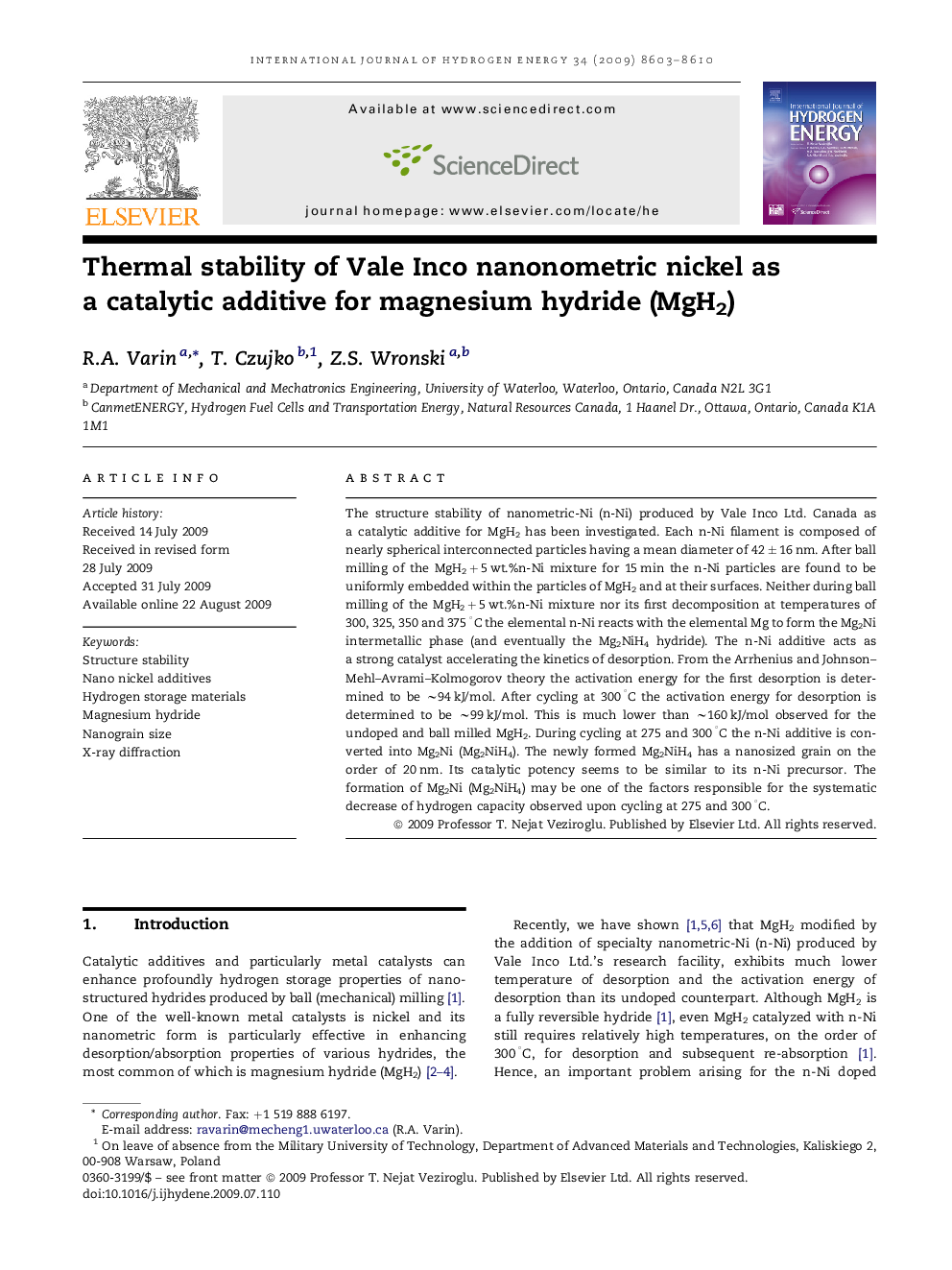| Article ID | Journal | Published Year | Pages | File Type |
|---|---|---|---|---|
| 1278438 | International Journal of Hydrogen Energy | 2009 | 8 Pages |
The structure stability of nanometric-Ni (n-Ni) produced by Vale Inco Ltd. Canada as a catalytic additive for MgH2 has been investigated. Each n-Ni filament is composed of nearly spherical interconnected particles having a mean diameter of 42 ± 16 nm. After ball milling of the MgH2 + 5 wt.%n-Ni mixture for 15 min the n-Ni particles are found to be uniformly embedded within the particles of MgH2 and at their surfaces. Neither during ball milling of the MgH2 + 5 wt.%n-Ni mixture nor its first decomposition at temperatures of 300, 325, 350 and 375 °C the elemental n-Ni reacts with the elemental Mg to form the Mg2Ni intermetallic phase (and eventually the Mg2NiH4 hydride). The n-Ni additive acts as a strong catalyst accelerating the kinetics of desorption. From the Arrhenius and Johnson–Mehl–Avrami–Kolmogorov theory the activation energy for the first desorption is determined to be ∼94 kJ/mol. After cycling at 300 °C the activation energy for desorption is determined to be ∼99 kJ/mol. This is much lower than ∼160 kJ/mol observed for the undoped and ball milled MgH2. During cycling at 275 and 300 °C the n-Ni additive is converted into Mg2Ni (Mg2NiH4). The newly formed Mg2NiH4 has a nanosized grain on the order of 20 nm. Its catalytic potency seems to be similar to its n-Ni precursor. The formation of Mg2Ni (Mg2NiH4) may be one of the factors responsible for the systematic decrease of hydrogen capacity observed upon cycling at 275 and 300 °C.
